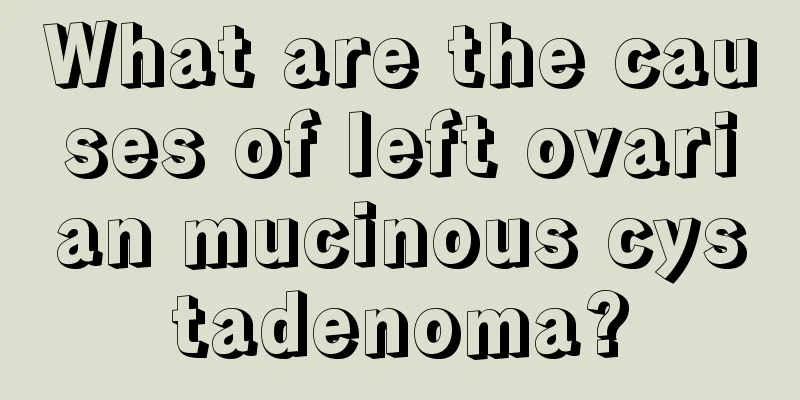Ovarian endometrioid cyst

|
Ovarian endometrioid cyst is actually a type of ovarian cyst. When it comes to ovarian cysts, most people may think that ovarian cysts are just a troublesome disease, but it can disappear on its own with treatment. In fact, this is true for most ovarian cysts, but for ovarian endometrioid cysts, they cannot disappear on their own. Among benign ovarian cysts, most are physiological cysts common in women of childbearing age, also called functional cysts. The ovaries of women of childbearing age ovulate almost every month, and a corpus luteum is formed after ovulation. If pregnancy does not occur, the life span of the corpus luteum is generally 14 days, at which time it should normally atrophy and disappear. However, if the corpus luteum does not successfully die, or even has a small amount of bleeding and further fluid accumulation, a corpus luteum cyst will form. If you are pregnant, it can continue to exist for about 6 weeks, and clinically it looks like an ovarian cyst, so there is no need to worry. Another type of functional cyst is the follicular cyst, which is caused by the follicle continuing to grow without ovulation, eventually forming a cyst with clear serous fluid in the middle. The above types are all functional physiological cysts. Generally, they will disappear naturally after 2 to 3 months of treatment and observation. If it continues to grow, surgery can be performed. If the cyst is large and prone to torsion, emergency laparoscopic surgery may be required. What kind of cysts need attention? If it doesn't go away on its own, you need to pay attention to it. If a cyst does not disappear on its own after 2 to 3 months of observation, it should be considered a non-physiological cyst and you should seek medical attention promptly. There are many types of non-physiological cysts, but the most distinctive one is the chocolate cyst mentioned above. Chocolate cyst is also called endometriosis cyst. As the name suggests, endometriosis cysts only occur when there is endometriosis, although sometimes the size of the endometriosis lesions in the pelvic cavity is not proportional to the size of the cysts. Chocolate cyst is a typical modern disease. Modern women lead stressful lives and keep delaying their birth plans, which eventually lead to dysmenorrhea and infertility. Often, after trying extremely hard, one still cannot even achieve basic natural pregnancy. Some women also have adenomyosis, severe dysmenorrhea, and are in great pain during each menstrual period. This type of female patient is very common, but because they are afraid of the side effects of painkillers, they are unwilling to use too much painkillers. Here we need to remind women of childbearing age that if adenomyosis develops, even the success rate of in vitro fertilization will drop sharply. If they suffer from dysmenorrhea for a long time, they should seek medical attention in time. |
<<: The ovarian artery arises from which artery
>>: What is the normal ovarian volume?
Recommend
How many follicles does a woman normally produce per month?
Women are fertile throughout their lives. As long...
I have constipation, what should I eat?
1. These ingredients are good for intestinal heal...
What is the reason for the empty gestational sac?
The empty gestational sac is also commonly known ...
What causes lumbar pain in women?
In life, people always think that men’s waists ar...
Is hard or soft eyeliner better? How to use liquid eyeliner to draw lower eyelashes
What kind of eyeliner should a beginner use depen...
Can electronic cigarettes be used in public? What will happen if you smoke electronic cigarettes frequently?
Electronic cigarettes are an electronic product t...
What to do if you have intermittent bleeding after abortion
What should you do if you have intermittent bleed...
"DIY water" is popular, but some people drank it and ended up in the hospital! The doctor said...
Recently, the first cup of "DIY water" ...
Sudden deafness is not a trivial matter, prevention and protection are the key
Author: Feng Jinwei, Rehabilitation Therapist, Sh...
Woman grinding teeth while sleeping
Many people are prone to grinding their teeth whe...
What should I do if a girl has a bad genital odor?
The body structures of girls and boys are differe...
Why do I have breast pain during pregnancy?
Generally, when people are pregnant, they often r...
The probability of amniocentesis failure
Nowadays, some pregnant women choose to check whe...
How often should I eat preserved egg and lean meat porridge? What are the tips for making preserved egg and lean meat porridge?
Although preserved egg and lean meat porridge tas...









